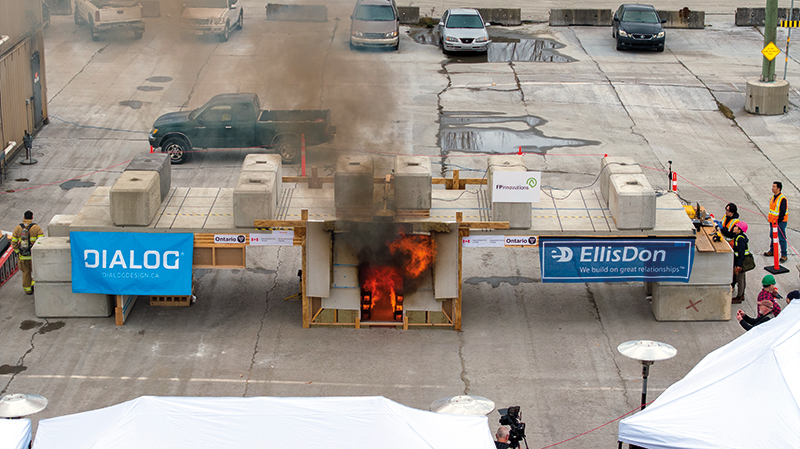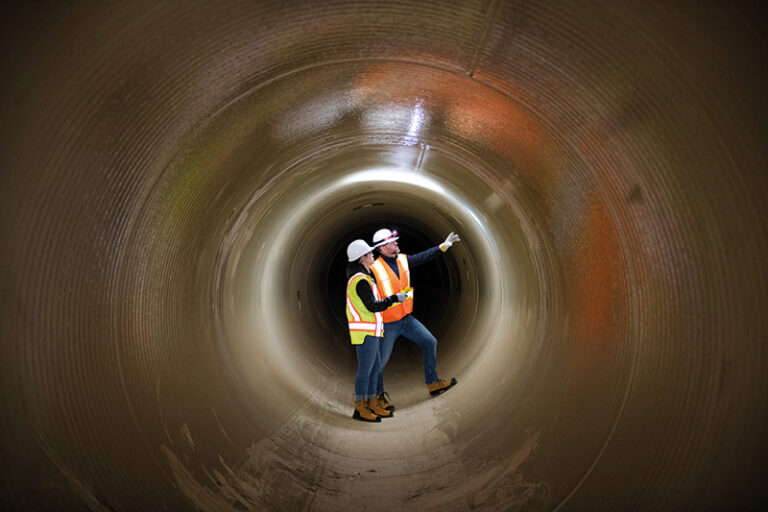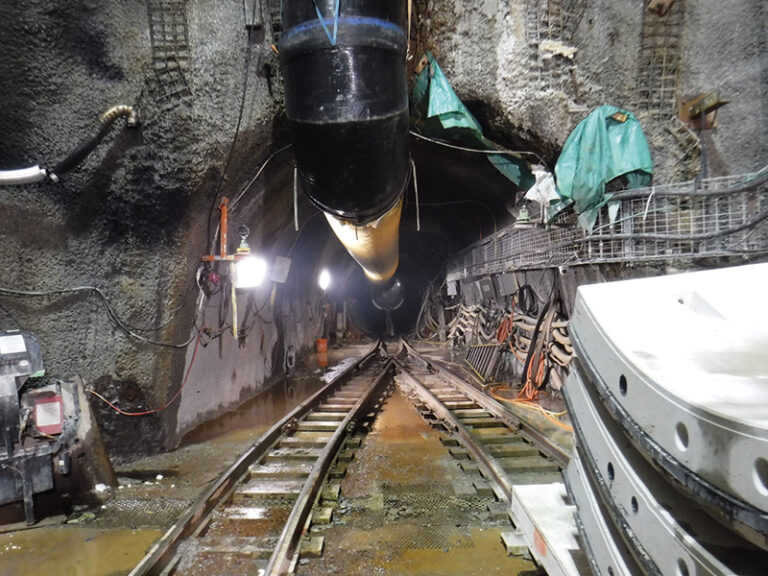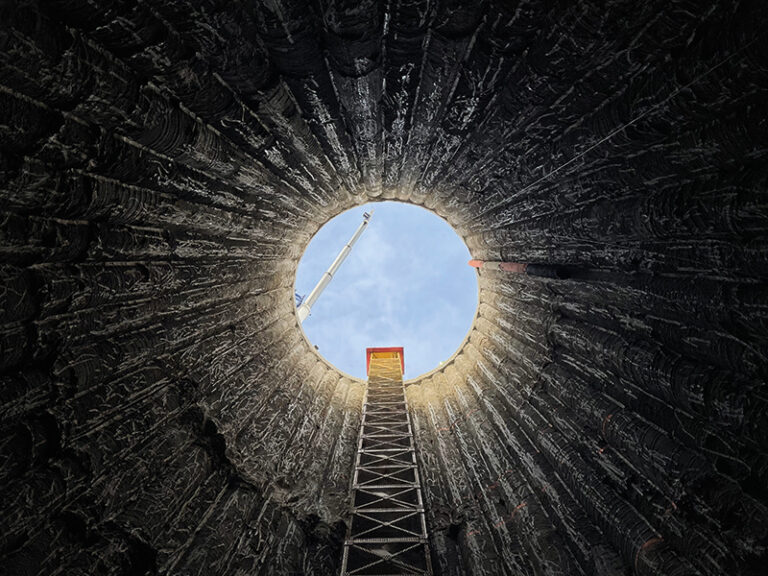By Angela Gismondi
EllisDon recently set its Hybrid Timber Floor System (HTFS) on fire to challenge assumptions and misconceptions about mass timber and demonstrate what is possible with sustainable construction in the future.
In March, EllisDon’s Building and Materials Sciences team, with the help of its partners, successfully executed the largest fire demonstration test in the organization’s history.
“It was an unprecedented opportunity for people such as code officials, designers and fire officials to come and see with their own eyes how the system performs in a fire,” said Mark Gaglione, director, Building and Materials Sciences at EllisDon, adding this was a unique event as the industry doesn’t get very many opportunities to witness a full-scale building product burn test.
The system demonstrated its ability to remain structurally sound under extreme fire conditions.
“It’s our goal to really showcase the strength of mass timber,” said Gaglione. “The results we’re seeing challenge the perceived limits of mass timber construction within both the industry and public perception.”
The innovative floor system started as an idea on paper in 2019 and began to take shape during the COVID-19 pandemic. EllisDon partnered with DIALOG to develop the low-carbon, long-span alternative to concrete and steel. The research for the floor system received funding from the Government of Ontario and Natural Resources Canada.
The system is actually made up of three separate elements that already exist, explained Vincent Davenport, director, Construction Sciences, EllisDon. It incorporates Cross-Laminated Timber (CLT) as its base, with post tensioned concrete on the underside and a concrete topping to create a 40-foot exposed timber span.
“We combined those three things into one product so it’s an innovation in that sense,” he noted. “You get the benefit of all three things in one panel product.”
The patent-pending system boasts the strength of concrete with the sustainability benefits of mass timber. The prefabricated floor panels are more durable, thinner and can reduce embodied carbon emissions by 25 per cent compared to traditional concrete and steel construction. The design also allows for exposed timber finishes, offering aesthetic appeal.
Furthermore, it allows builders to use mass timber in ways that were traditionally reserved for concrete and steel construction, such as long-spanning structures, Gaglione explained.
Developing the long-span timber floor panel is part of EllisDon’s commitment to advance the use and adoption of mass timber across a variety of projects. The panel provides a possible solution to maximize the use of mass timber in building typologies that are not readily conducive to typical mass timber framing such as commercial and institutional projects. It enables large, open spaces often desired in commercial buildings without beams intruding into the space.
Two full-scale panels measuring 40 feet long and 10 feet wide have been undergoing structural testing at a lab on the west coast. EllisDon and DIALOG partnered with FPInnovations, a not-for-profit research and development organization supporting the Canadian forest sector, to conduct the testing.
The opportunity came about to bring one of the prototypes out of the structure testing lab and into a fire testing yard in Richmond, B.C. to do full-scale fire testing. The facility is used by the Richmond Fire Department to practice rescue exercises.
The demonstration involved setting the HTFS on fire to see how it burns in different conditions.
“We had already done a small-scale fire test to inform the actual design of the product and this gave us the opportunity to do a full-scale fire test,” said Davenport.
“We had sensors, it was heavily instrumented during the test so we could understand how it was performing, its deflection and also the temperature at different levels and different parts during the fire. There was an academic portion that was informing us but it wasn’t a standardized test. It was more of a demonstration burn so that people could come and see how the system works.”
The team positioned the 40-foot floor panel above a controlled burn and placed 37,890 lbs of concrete blocks on top, equivalent to the weight of seven Ford F150 trucks. Controlled fires, monitored by firefighters, were lit beneath the panel to test its capacity and structural integrity in the event of a large-scale fire.
“We tested the product full scale, exactly how it would be in real life if we were producing it for a project,” said Gaglione. “A box was built to contain the fire at the centre of the span which is the most susceptible part of the product.”
Once the fire was lit, it got to 900 degrees Celsius in 30 minutes.
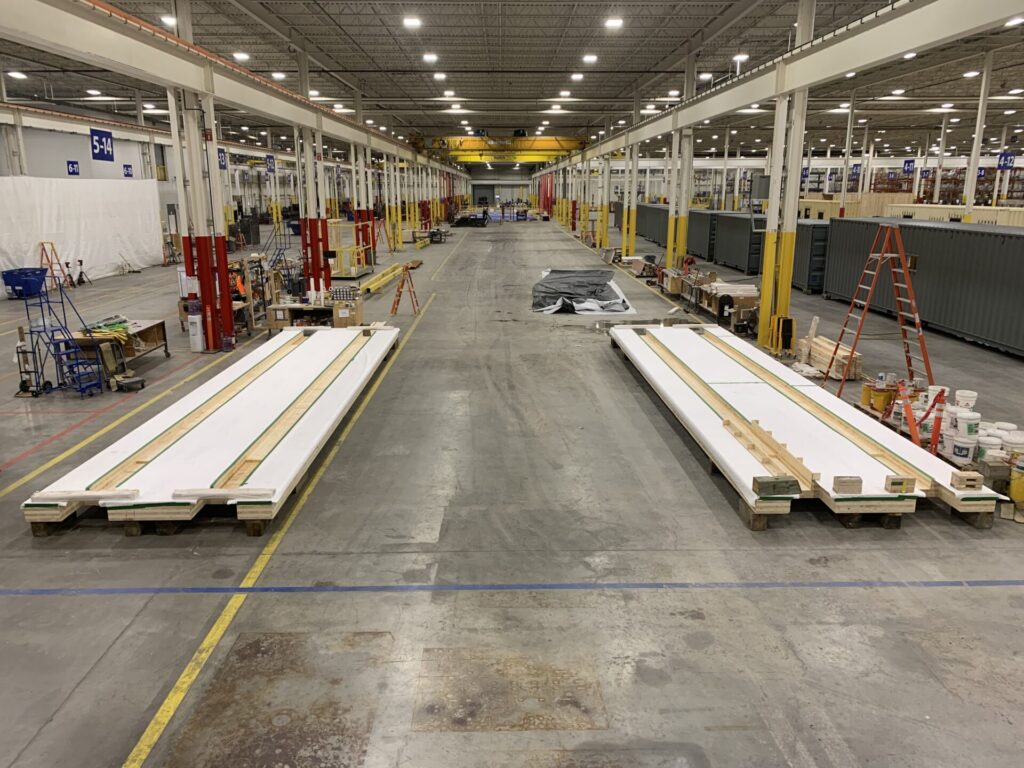
EllisDon’s Hybrid Timber Floor System incorporates Cross-Laminated Timber (CLT) as its base, with post tensioned concrete on the underside and a concrete topping to create a 40-foot exposed timber span. (EllisDon)
“The most interesting thing was the deflection,” said Davenport. “It deflected 17 mm, just over a centimetre-and-a-half. Despite the immense load, the panel remained structurally sound and did not collapse during the test. It took a severe fire with structural loading, and it demonstrated good structural performance is what our engineers concluded.”
Ultimately, the testing helped inform the team’s understanding of how the panel would perform in an actual building fire. Before the test occurred, there was some modeling done to predict what would happen the demonstration validated the model.
“We had already done the fire test, we had already done structural testing and we already had a modeled version of this, a computer simulation, and it pretty much performed how we had modeled it,” said Gaglione. “It was interesting to confirm how it performed in real life.”
After the fire went out on its own, firefighters made sure the fire was fully extinguished so the research team could go in immediately to inspect the state of the panel.
“It was really interesting for people to actually see this demonstration, to actually see the panel catch fire but then self extinguish and to see the fire could go out on its own,” Davenport noted.
“When there is this big fire underneath the panel, the temperature on the top barely changed. So if you had the fire in the unit below you…the temperature of that slab would barely change, it only changed by one or two degrees.”
The test included two fire scenarios. The first was the contained fire and the second was a less contained fire to explore how far the fire would spread on its own. The second test found that the fire wouldn’t spread very far.
“During the compartment fire test the temperature at the top surface of the concrete-topped CLT panel rose only a few degrees, even as the under side reached 900 degrees Celsius—demonstrating exceptional resistance to heat transfer,” Gaglione noted.
The other HTFS panel is still in the testing lab undergoing structural testing and will remain there until the end of the year. Once the research and development portion of the product development is concluded, the results will be published.
“The next step is bringing it to market and have an opportunity to build a building with this product,” said Gaglione.
“We are in a position now where we are prepared to use this in an actual building. We have enough information to implement this technology on a real project.”
One of the benefits of the R&D project was the collaboration and having the ability to conduct research with other partners, Davenport said.
“One of the big things we’ve learned from this whole process is the importance of cross-industry collaboration. It’s been a fulfilling endeavour, and a lot came out of it in terms of value beyond the product itself.”
Angela Gismondi is a journalist with over 20 years of experience. She has spent the last eight years writing content for the Canadian construction industry.
[This article appeared in the September/October 2025 issue of ReNew Canada.]
Featured image: EllisDon’s Building and Materials Sciences team, with the help of its partners, successfully executed the largest fire demonstration test in the organization’s history. (EllisDon)

